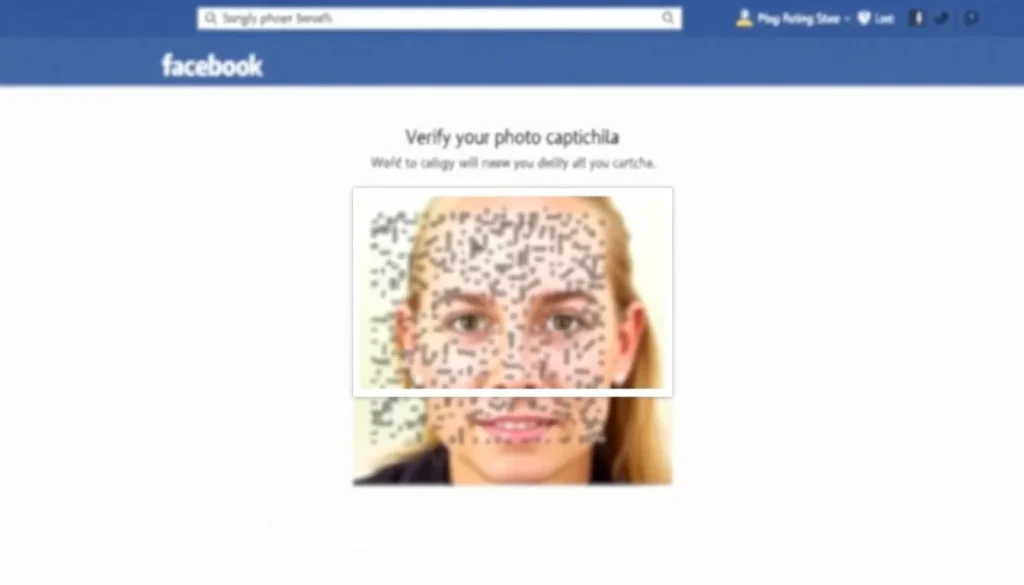Facebook will require a photo captcha to verify your identity

In an age where online security is more crucial than ever, Facebook is introducing a novel approach to identity verification. The platform is now requesting certain users to take a photograph as a means of confirming their identity. This shift signals a move away from traditional CAPTCHA methods—those often frustrating sequences of letters and numbers—and aims to bolster security against bots and hackers.
This initiative aligns with broader trends in digital verification, reflecting a growing need for more sophisticated and personalized security measures. As technology evolves, so too do the tactics employed by those attempting to breach accounts, prompting companies like Facebook to adapt swiftly.
- Understanding the New Verification Process on Facebook
- Why Does Facebook Request a Photo for Identity Verification?
- What to Expect When Facebook Asks for Identification
- Facebook's Broader Context in Online Security
- Potential Concerns Regarding Privacy and Data Usage
- Steps to Take if You Are Uncomfortable with Providing a Photo
- Final Thoughts on Facebook's Identity Verification Initiative
Understanding the New Verification Process on Facebook
Facebook's new identity verification method is part of a testing phase aimed at enhancing account security. Users will be prompted to take a selfie in a variety of significant scenarios, such as:
- Changing account details
- Resetting passwords
- Conducting financial transactions
- Managing friend requests
- Creating or editing advertising campaigns
This approach is intended to make it harder for unauthorized users to gain access to accounts, thus reducing the risk of identity theft and other malicious activities.
Why Does Facebook Request a Photo for Identity Verification?
The primary reason for this request is to ensure that the person managing the account is indeed the rightful owner. By asking for a clear photo, Facebook aims to create a more secure environment for all users. This method not only minimizes the risk of fraud but also enables the platform to better identify and block suspicious activities.
While Facebook assures users that these photos will not be stored, skepticism remains. Many users may feel uneasy about providing such personal information, even if the platform claims it will not retain the data.
What to Expect When Facebook Asks for Identification
When you encounter a request for a photo, it is advisable to follow these steps:
- Ensure you are in a well-lit area for a clear image.
- Position your camera to capture your face directly.
- Follow any specific instructions provided by Facebook regarding the photo.
- Submit the photo as instructed.
- Monitor your account for any subsequent communications from Facebook.
This systematic approach can help ease the process and provide clarity on what is required from users.
Facebook's Broader Context in Online Security
This strategy is not unique to Facebook. Other platforms are also evolving their security protocols. For instance, Google has recently phased out traditional CAPTCHA systems in favor of more seamless verification processes. This change highlights a significant trend in tech companies moving towards more user-friendly security measures.
These advancements include:
- Behavioral analysis—monitoring how users interact with their devices.
- Utilization of machine learning algorithms to detect unusual patterns.
- Implementation of biometric verification methods, such as fingerprint recognition.
As these technologies become more prevalent, users can expect increasingly sophisticated methods for ensuring their security online.
Potential Concerns Regarding Privacy and Data Usage
Despite the potential benefits of enhanced security, many users have legitimate concerns regarding privacy. The idea of sharing personal images can be unsettling, particularly given the history of data breaches across various platforms. Users often worry about where their images might end up and how they could be used in the future.
Addressing these concerns is essential for platforms like Facebook. They must provide transparent information on:
- How long the images will be retained (if at all)
- The specific measures taken to secure this information
- Policies regarding data sharing with third parties
Effective communication can help alleviate user fears and encourage participation in security measures.
Steps to Take if You Are Uncomfortable with Providing a Photo
If you are hesitant about providing a photo for verification, consider the following alternatives:
- Check if you can verify your identity through alternative means, such as security questions or trusted contacts.
- Review Facebook’s help center for guidance on account security.
- Engage with customer support to express your concerns and seek assistance.
Being proactive in understanding your options can empower you in the verification process.
For those looking to navigate the verification process more smoothly, there are various resources available. One informative video on this topic is titled "Verify Your Facebook Profile | Confirm Your Identity | 2024", which provides a detailed overview of the verification steps:
Final Thoughts on Facebook's Identity Verification Initiative
As Facebook tests this new verification method, users must remain informed about their rights and the implications of participating in such security measures. While the intent is to protect users, the balance between security and privacy is delicate. Staying educated and cautious will ensure that users can navigate these changes effectively.




Leave a Reply